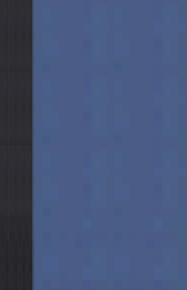A digital collection is simply a set of related items that are in electronic form and can be accessed by computers or other electronic devices (Mobile, tablet, etc.). We can call these electronic items digital objects or digital materials. These digital materials tend to fall under two categories: 1. born digital and 2. made digital from analog sources.
I. Born Digital Materials
Born-digital refers to any item that was created in an electronic environment or originated in a digital form. Types of born-digital materials include but are not limited to:
II. Digitized Materials
These are analog materials that have been transformed into digital form, especially for storage, access and use in a computer. These are materials that were NOT “born digital” but converted to digital materials through the process of digitization and include, for example:
Digitization is a process of converting the different forms of information, such as text, books, art works, historical documents, images, photos, journals, sound recordings, videos, etc. into digitized format. The digitization of these materials must follow appropriate digitization standards and guidelines.
AUB Libraries follow FADGI guidelines (Federal Agencies Digitization Guidelines Initiative) for its digitized content. FADGI is a cooperative effort among experts in the field, including Library of Congress, to develop and sustain common digitization guidelines and practices for cultural heritage materials.
To learn more about digitization standards, preservation and best practices refer to the following books, resources and guides:
I. Books
 الرقمنة والحفظ الرقمي: دليل إرشادي لحفظ الملفات الرقمية والمرقمنة في المكتبات ومراكز المعلومات
by
بسمة شباني
الرقمنة والحفظ الرقمي: دليل إرشادي لحفظ الملفات الرقمية والمرقمنة في المكتبات ومراكز المعلومات
by
بسمة شباني
II. Resources and Guides
(IFLA 2002) إرشادات مشاريع رقمنة مجموعات الحق العام، في المكتبات ومراكز الأرشيف
Digital collections tend to be focused on a person, event, organization, or time period, and can be organized by subject, format, type, place, and also by time period.
Digital collections also offer search functionality.
Metadata is data about data. "The term refers to any data used to aid the identification, description and location of networked electronic resources" (IFLA, Digital Libraries: Metadata).
There are different types of metadata. The main types of metadata relevant to digitization projects are:
 Administrative metadata: contains information that will help in management and preservation of the digital object, including file format, file size, how the object was created, who can access it, what software is required to use it, and copy right permission.
Administrative metadata: contains information that will help in management and preservation of the digital object, including file format, file size, how the object was created, who can access it, what software is required to use it, and copy right permission. For more on Metadata refer to this book 'Metadata for digital collections : a how-to-do-it manual'
OCR (Optical Character Recognition) is a technology that enables to convert different types of documents, such as scanned paper documents, PDF files or images captured by a digital camera into editable and searchable data. This technique converts the image of a scanned page into text.
For best practices refer to OCR Best Practices from University of Pittsburg Libraries.
The following are sample OCR software or tools: Adobe Acrobat Pro DC, ABBYY Finereader, Tesseract, Online OCR, Google Drive and Copyfish.
Finereader, Tesseract, Online OCR, Google Drive and Copyfish.
Copyright is a form of legal protection that provides authors of original creative works (for example text, images, music, and videos) with a set of exclusive rights to:
Copyright Duration varies from country to country, for example:
Copyright duration does not last forever. When copyright expires, the work is said to be in the public domain or out of copyright
Public Domain
The term "Public Domain" refers to creative and intellectual works that are not protected by intellectual property laws such as copyright, trademark, and patent laws. These works are open for access and usage by the public without obtaining permission.
Works can become in the public domain, if:
Creative Commons Licenses
Creative Commons is a non profit organization that provides free licenses for individuals who want to license their work. The Creative Commons (CC) licenses allow creators to communicate which rights they reserve, and which rights they waive for the benefit of recipients and other creators.
There are six different Creative Commons licenses, each with varying levels of freedom and conditions for use of various materials.
|
Key License terms are four:
|
Infographic by Shihaam Donnelly |
The most restrictive of the six main licenses is ![]() CC-BY NC ND (Attribution-Non Commercial-No Derivatives): "Anyone is free to download and share works under this license as long as they give credit for the original creation, the shared work is not changed and not used for commercial purposes." (AUB University Libraries - Digital Collections)
CC-BY NC ND (Attribution-Non Commercial-No Derivatives): "Anyone is free to download and share works under this license as long as they give credit for the original creation, the shared work is not changed and not used for commercial purposes." (AUB University Libraries - Digital Collections)
